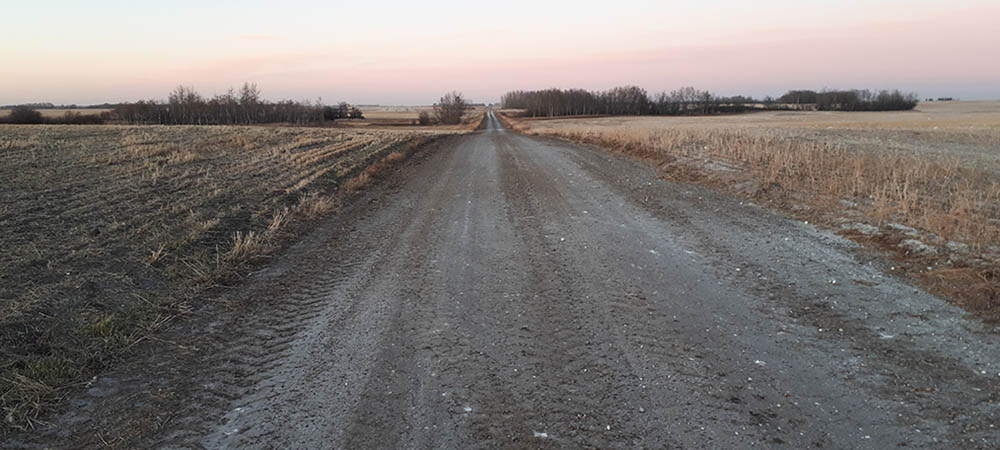
By Harry Brook
As crop prices continue to rise, it has directly affected the price and use of land. We can see it all around us as brush and sloughs are being cleared or burnt to increase the “farmable” acres. Part of the area that some producers might be using are undeveloped road allowances. Even though a road allowance may be undeveloped or grown back in, it doesn’t change the fact that those areas are under the direction, control and management of the municipality. The title to all roads in a municipality is vested in the Crown in right of Alberta.
Western Canada was first surveyed under the Dominion Land Survey in the 1870s. It set aside land for road allowances between sections for field access purposes. A road allowance was measured as being one chain wide, which is 66 feet. Each township of six miles by six miles has three roads east-west and a road allowance every mile going north-south. In some cases, roads and road allowances were surveyed outside this grid pattern to accommodate terrain features that prevented a road allowance from being developed (like gullies and steep slopes). As a matter of interest, a chain is four rods long and a rod is 16.5 feet long. If you measure a rod wide and a half mile long, you get exactly one acre.
A lot of the road allowances that were surveyed have never been developed. In some cases, they remain in native grass and brush or have been historically cropped or grazed. With respect to these particular road allowances, despite the fact they are being utilized by adjacent landowners, they are still under the control of the County. Just because a road allowance is undeveloped does not change the fact it is public land with the intended sole purpose of access or travel.
Associated with this is the issue of agricultural encroachment onto existing developed right-of-ways, or to put it simply, cropping onto the roadsides. Part of the County’s responsibility is to control weeds along our municipal right-of-ways. To that end we try to keep the sides of the road vegetated in grass to prevent invasive weeds from establishing and spreading.
Unfortunately, we see many places along the edges of fields where the grass has been sprayed out due to sprayer booms moving onto the road allowance when the sprayer turns in the field. With the modern and high-tech sprayers we have today, this could easily be avoided. Those areas sprayed along the field margin are prime locations for weeds to establish. Then the County and adjacent landowner both have a weed problem to deal with.
To address Agricultural Encroachment on Municipal Right-of-Ways, the County has implemented the following guidelines:
- The minimal acceptable standard allowed for cultivation and planting of annual and perennial crops adjacent to a right-of-way will be one (1) metre set back from the “toe” of the slope of the developed road.
- Any landowner/tenant agriculturally encroaching upon a right-of-way will be notified to stay a minimum of one (1) metre from the “toe” of the slope or further, dependent upon how it impacts the integrity of the road.
- Any crops found within the right-of-way as a result of non-compliance by the landowner/tenant, will be removed as part of Flagstaff County’s regular vegetation control program.
Road allowances serve a valuable purpose, not only through the provision of access or travel, but as well as natural habitat for wildlife, pollinators etc. They can also be a source of conflict between landowners, the public and the County. Having a clear idea of the purpose and who holds jurisdiction should reduce this conflict. As it is advertised on roads and highways for multiuse, “Respect the Rules of the Road”.
Harry Brook is Flagstaff County’s Agricultural Fieldman. He can be reached via email at: hbrook@flagstaff.ab.ca or by phone at: 780-384-4138.